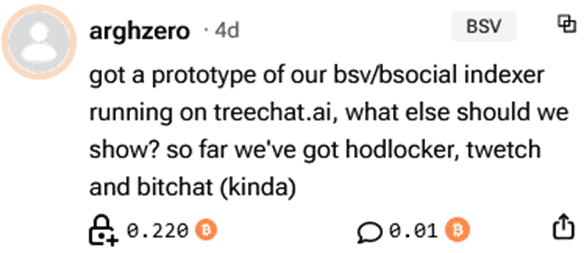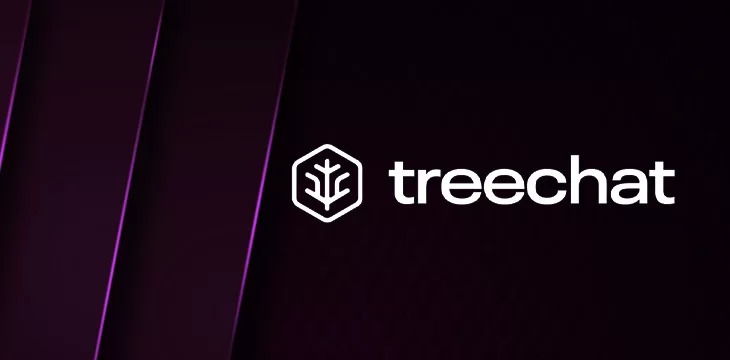|
Getting your Trinity Audio player ready...
|
Formerly known as Knovigator, treechat.ai has rebranded as an “infinitely threaded chat for valuable conversation with humans and AI.” Treechat allows users to create threads with artificial intelligence (AI) support, where users can choose their model to add context to the threads. I caught up with the creator of Treechat, Dmitriy Fabrikant.
Why rebrand from Knovigator to Treechat, with a focus on AI?
Dmitriy Fabrikant: Knovigator was a play on words: Knowledge + Navigator, but was too mysterious and difficult to remember. Treechat is easier to remember and more descriptive. Treechat is an infinitely threaded writing and conversational canvas. Each message in a thread can branch into a new sub-thread, the sub-thread messages can branch into their own sub-threads, and so on. As we write, we grow a tree structure to capture and organize our thinking… hence Treechat.
Paradoxically, the structure grants greater freedom by mirroring the associative nature of our thinking: our mind is constantly generating tangents, i.e., branches. Other chat user interfaces force you to mix multiple tangents into a single stream. This is confusing, and the friction can cause you to abandon fleeting ideas. Treechat lets you quickly branch off a sub-thread, creating a space to explore your idea fully by yourself or with others.
Branches collect related messages, making past conversations easy to find and reuse. In Treechat, our conversations become assets capable of being valued and expanded. This same branching structure can be used as a way to organize any other information, as in an outline to draft a novel, or as a personal file system by attaching files to our messages.
Why the focus on AI? AI is a powerful tool to amplify human intelligence and creativity. Andrej Karpath recently tweeted that the right approach to AI is as intelligence amplification, which is our goal.
e/ia – Intelligence Amplification
– Does not seek to build superintelligent God entity that replaces humans.
– Builds “bicycle for the mind” tools that empower and extend the information processing capabilities of humans.
– Of all humans, not a top percentile.
– Faithful to… pic.twitter.com/QQrJVRvScr— Andrej Karpathy (@karpathy) January 8, 2024
Existing social networks lack the correct incentives to be able to pursue this because they must ultimately serve advertisers and farm their users’ attention. Anyone who has been distracted by an ad understands this.
At Treechat, we are working to amplify our users’ intelligence, whether with AI at an individual level or with attention/information markets on the Bitcoin SV blockchain at a collective level.
Why implement AI features in the threads?
Dmitriy Fabrikant: I never want to decide ahead of time if I am writing for humans or writing for AI and have to choose different tools depending on the answer. I want to start writing and invite AI agents in and out of conversation as necessary. In Treechat, AI agents and humans can interact in a collaborative way with users having fine-grained control over what an AI responds to.
Having your notes, conversation, and AI agents on the same platform makes it easy to find and use valuable knowledge no matter its provenance.
Treechat also lets you choose which models to talk to. This is useful because models have different capabilities and trade-offs: commercial models have higher reasoning ability but censor more than open-source models, some models have larger context size but are less accurate. You shouldn’t have to switch apps to access these capabilities, so we put them all in Treechat.
How are micropayments integrated?
Dmitriy Fabrikant: I think what I value the most about social networks is finding valuable knowledge, so at Treechat we are constantly thinking about how we can be showing you the most valuable information at any given moment. The challenge is that we are flooded with information, and now, with generative AI, this will be an even bigger problem.
To solve it, our goal is to build a social network that kick-starts an information market to price content and use that price to curate the most valuable knowledge, for individual empowerment, and superior collective coordination. In my opinion, Bitcoin SV is the only blockchain cheap enough and scalable enough to do this.
Our first attempt at this was to “upvalue” messages.
Upvalue is “upvoting” with money, but unlike cheap upvotes, even small upvalues require a user to sacrifice BSV in order to send an honest signal about what they value.
As messages are upvalued, they rise in search rankings, creating a basic attention market where upvaluing messages purchases attention for them as users encounter them more frequently.
However, since discovering locking on BSV, we decided to relaunch using locking as the primary signaling mechanism. Locking works in a similar manner to upvalue by requiring users to incur an (opportunity) cost to honestly signal the value of a particular message, but because the user gets their money back eventually, the cost of locking lower-friction and higher adoption.
Are threads posted on-chain? Why or why not?
Dmitriy Fabrikant: We have a working prototype, scheduled for release in the next few weeks, which automatically posts public threads on-chain, at no cost to users.
For users, posting on-chain allows them to own their data and to view it with any compatible client in novel and interesting ways without being trapped in a walled garden.
For developers, having access to user data on-chain can let us experiment with novel user experiences over that data without having to face the cold-start problem of not having any content to show faced by developers operating in the old paradigm.

How will Treechat be interoperable?
Dmitriy Fabrikant: We are working on making Treechat as interoperable as possible. We will post public threads on-chain using the bSocial protocol. Users will not be locked into our platform when posting publicly, and others can develop clients to consume the content our users generate.
In an upcoming release, we will start consuming the bSocial feeds of other apps on the BSV blockchain, including Hodlocker, Twetch, and Retrofeed, which will be shown as first-class Treechat threads.
Other platforms don’t currently show posts from other bSocial apps, but it would be cool if users can respond in Treechat and have those show up in Hodlocker, for example. Our hope is that developers will join us in displaying other bSocial posts in their apps.
What if your social network was optimized for delivering you value, instead of for harvesting your attention for advertisers? pic.twitter.com/iTdjZrwDQh
— treechat.ai (@treechatai) January 5, 2024
Why add locking coins as a means of curation?
Dmitriy Fabrikant: We started curating Treechat content using Upvalue, but when we saw a community building around locking on Hodlocker, we investigated and decided to add locking.
Like Upvalue, locking enables users to send an honest signal of quality with a small sacrifice. Users who lock incur an opportunity cost since they can’t spend or invest locked coins, but unlike upvalue, the users eventually get their money back, which makes locking a lower-cost, lower-friction, and easier-to-adopt way of signaling with money.
Locking also has interesting second-order effects. While the individual who locks incurs an opportunity cost, by locking up BSV, they reduce its supply, benefitting other BSV holders.
Locking is also more resilient against sybil attacks than upvalue.
Which BSV wallet(s) will be supported?
Dmitriy Fabrikant: For the initial version, we have developed custodial wallets based on SHUAllet.js.
Soon, we will be releasing support for non-custodial wallets like Panda Wallet. Going forward, it would be cool to make a list of wallets we are considering supporting and have the community use locking to vote on which wallets to prioritize supporting.
How does Treechat compare to Windbell, a bookmarking application built on BSV?
Dmitriy Fabrikant: We don’t have a lot of experience using Windbell, but it looks like there is a lot of overlap in our motivation. We both recognize the corrupting influence of the advertising model on how social networks prioritize what users pay attention to.
We also have features in common, including what Treechat calls clipping, which lets users capture content from anywhere on the web via a Chrome extension or from other social networks via the mobile share menu using our mobile app, currently in Beta (treechat.ai/mobile).
Treechat’s main focus is on social curation. In Treechat, clipping is a Treechat’s infinitely threaded canvas, the content is indexed and becomes searchable, annotatable, and shareable with other Treechat users, and soon with available AI agents. Like native Treechat posts, the best-captured content can be locked on to signal quality.
We look at Clipping as an effortless way to collect valuable knowledge so we can start collaboratively curating it for when we need it most.
Why should we use treechat as opposed to other private notetaking applications such as Keep, OneNote, etc.?
Dmitriy Fabrikant: I think an infinitely threaded, multi-dimensional writing medium, that can move effortlessly between single and multi-player modes, is a more powerful tool for exploring our thinking and collaborating on ideas. When we couple this with an attention market capable of effectively prioritizing our collective attention, Treechat becomes a powerful tool for human coordination.
Many of us are hoarding our best knowledge in private note silos… Treechat aims to bridge the gap between private notetaking and social sense-making by providing an incentive to share and curate our most valuable knowledge, for our individual and collective benefit.
Thank you Dmitriy, for taking the time to answer my questions. I hope the readers learned more about treechat and their plans in the future.
This article was lightly edited for clarity and grammatical purposes.
Watch: AI truly is not generative, it’s synthetic

 07-12-2025
07-12-2025 





